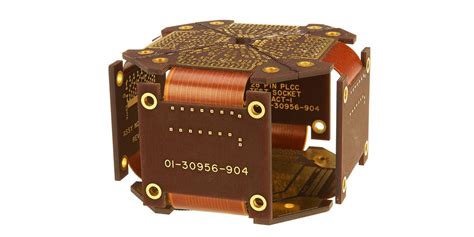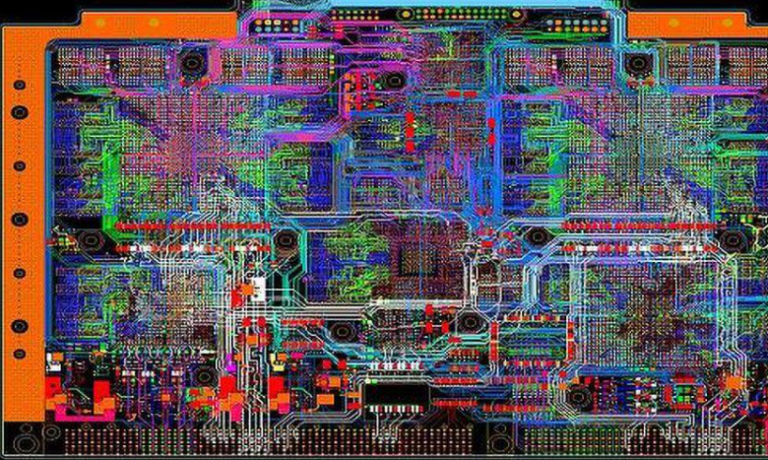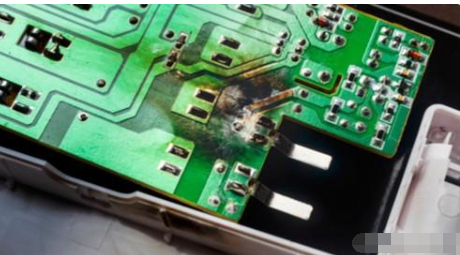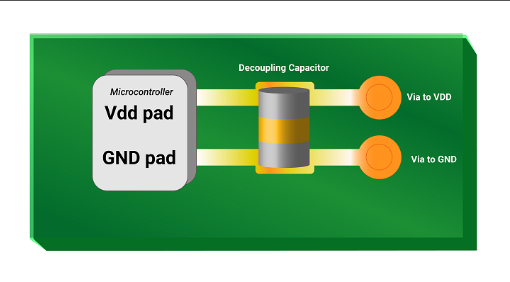Mastering Board Assembly: Essential Techniques for Success
Key Takeaways
Mastering pcb assembly requires a thorough understanding of both the fundamental concepts and advanced techniques that enhance the quality and reliability of the final product. By familiarizing yourself with the various stages involved in pcba, you can significantly improve your efficiency and precision. Start by recognizing that effective board assembly not only involves meticulous design and preparation but also a keen attention to detail throughout the assembly process. Emphasizing best practices, such as ensuring all components are organized, properly oriented, and soldered correctly, can prevent common mistakes that lead to functional failures. Additionally, employing quality control techniques at various stages of pcb assembly helps to identify issues early on, saving both time and resources. Aspiring engineers should also invest in learning about industry-standard tools and equipment that are essential for successful pcba. By integrating these strategies into your workflow, you create a foundation for error-free board assembly that can support complex projects while maintaining high standards of quality control.
Introduction to Board Assembly: Understanding the Basics
Board assembly, often referred to in the industry as PCB assembly or PCBA, is a critical process in the manufacturing of electronic products. This intricate procedure involves the careful placement of components onto a printed circuit board to create a functional electronic assembly. Understanding the basics of board assembly is essential for anyone involved in electronics, whether you’re a hobbyist or a seasoned engineer.
The process begins with designing a schematic and laying out the PCB effectively, ensuring all components will fit well and function as intended. This stage is crucial as it sets the foundation for successful pcb assembly. Typically, the components are categorized into passives, actives, and connectors; each plays a distinct role in ensuring optimal performance of the circuit.
“A solid foundation in understanding component placement and soldering techniques will pay dividends during board assembly.”
As you delve deeper into pcba, familiarizing yourself with basic terms such as soldering methods—both manual and automated—becomes vital. Soldering, whether surface mount or through-hole, must be executed flawlessly to avoid common pitfalls that can lead to functionality issues later on. Integrating advanced technology like pick-and-place machines can streamline this process, enhancing efficiency.
To successfully navigate board assembly, understanding these fundamental principles not only empowers your skills but also lays the groundwork for mastering more sophisticated techniques later on. Establishing a solid grasp on the basics can dramatically reduce errors during production and ensure high-quality outcomes for all your electronic projects.
Essential Tools and Equipment for Board Assembly
When it comes to pcb assembly, having the right tools and equipment is crucial for ensuring efficiency and precision. A well-equipped workstation will facilitate smoother processes and help mitigate potential errors during the pcba process. At the heart of any assembly setup are the essential tools that include soldering irons, magnifying lenses, and static-free work surfaces. These components play pivotal roles in handling delicate electronic components without causing damage due to static electricity.
Moreover, utilizing PCB holders can significantly enhance accuracy, allowing technicians to focus on their soldering techniques without worrying about misalignment. A reliable digital multimeter is also indispensable for verifying connections and ensuring that voltage levels are within designated specifications before finalizing the assembly. As you venture further into the realm of board assembly, incorporating tools such as automated pick-and-place machines can streamline larger batch productions, elevating your functionality to a professional standard.
In addition to these primary tools, consider investing in quality assurance equipment, such as a visual inspection system, which can help in identifying defects that may not be apparent during manual checks. Adopting a comprehensive toolkit tailored to your specific project needs not only boosts productivity but also enhances your ability to produce high-quality results in every board assembly endeavor.
Step-by-Step Guide to Efficient Board Assembly
Efficient pcb assembly is paramount for achieving reliable and successful results in any electronics project. To begin, it’s crucial to understand the layout of your pcba before starting. A pre-assembly checklist can help streamline the process, ensuring that all necessary components are present and in good condition.
Table 1: Pre-Assembly Checklist
| Component | Status |
|---|---|
| PCB Layout | Verified |
| Resistors | Present |
| Capacitors | Present |
| ICs | Present |
| Soldering Material | Available |
| Tools (Soldering Iron, etc.) | Ready |
Once the components are verified, the next step is the actual assembly process. Begin with placing surface mount devices (SMDs), as they tend to be smaller and require a precise placement—often demanding a steady hand and keen attention to detail. Next, move on to inserting through-hole components.
In terms of soldering, whether using hand-soldering or a reflow oven for pcb assembly, it’s essential to maintain correct temperatures to avoid damaging sensitive components. After soldering, inspect the connections visually and consider performing an automated optical inspection to catch potential errors that could lead to failures in the final product.
Finally, remember that practice makes perfect. Gaining experience with pcba will not only improve your speed but also enhance your overall quality of work. By following these structured steps and maintaining a systematic approach, you will significantly increase your efficiency during board assembly, contributing positively to your overall project success.
Common Mistakes to Avoid in Board Assembly
When engaging in pcb assembly, understanding common pitfalls is crucial for achieving optimal results. One frequent mistake is overlooking the significance of proper layout and design during the initial stages. An inefficient layout can lead to routing issues and increased susceptibility to errors, which can compromise the functionality of the final product. Another common error involves neglecting to double-check component specifications, which can result in using incompatible parts during pcba processes. Furthermore, rushing through the board assembly stages can increase the likelihood of missing solder connections or improperly seating components, thus jeopardizing the quality of the assembly. It’s also vital to be aware of environmental factors such as static electricity and proper handling techniques, as they can severely damage sensitive components. Taking the time to systematically review each step not only enhances efficiency but also paves the way for more successful project outcomes. Reinforcing these considerations while maintaining a methodical approach will lead to improved performance and reliability in your board assembly endeavors.
Best Practices for Error-Free Board Assembly
Achieving error-free PCB assembly is crucial for the success of any electronics project. One of the foremost best practices to employ is ensuring a clean working environment. A clutter-free space minimizes the risk of losing small components and reduces distractions that could lead to mistakes during the PCBA process. Furthermore, adopting a systematic approach for organizing tools and materials is essential. Use labeled containers for different components, making it easier to find what you need quickly.
Equally important is double-checking the schematic diagram before starting the assembly. It is vital to verify that all components match their designated locations on the printed circuit board (PCB). Mistakes during this phase can lead to costly errors further down the line. The use of assembly jigs or fixtures can also contribute to accuracy, as these tools help ensure that components are placed correctly without movement.
In addition to these initial steps, implementing a thorough inspection process after assembly can catch errors before they escalate. Techniques such as visual inspections and automated optical inspection (AOI) systems are effective in identifying misplaced or incorrectly oriented components that may jeopardize functionality.
By following these practices, you position yourself for a successful board assembly experience that not only enhances your skills but also ensures that your projects are completed without unnecessary errors. Committing to quality from the outset will undoubtedly lead to improved efficiency in your future PCB assembly endeavors.
Quality Control Techniques in Board Assembly
Quality control is a critical aspect of pcb assembly that ensures reliability and functionality in the final product. Implementing rigorous quality control techniques during pcba processes can significantly reduce defects and improve overall efficiency. One of the foundational practices is establishing a robust inspection protocol, whereby each component is thoroughly examined before and after assembly. This step helps to catch potential issues early, minimizing rework or scrap. Additionally, utilizing Automated Optical Inspection (AOI) systems allows for swift and accurate detection of misalignments and soldering defects that may not be visible to the human eye.
Another essential technique involves conducting regular audits of the assembly process. By documenting performance metrics, teams can identify trends and areas needing enhancement, ensuring continuous improvement within the pcb assembly workflow. Furthermore, engaging in statistical process control (SPC) allows assemblers to monitor production processes in real-time, enabling them to respond promptly to anomalies that could lead to quality issues.
Training staff on how to recognize potential problems is equally vital; empowering employees with knowledge fosters a culture of quality awareness within the team. Incorporating these comprehensive quality control techniques not only enhances product reliability but also elevates customer satisfaction, making pcba an exemplary standard in manufacturing practices.
Advanced Strategies for Mastering Board Assembly
To excel in pcb assembly or PCBA, it’s crucial to implement advanced strategies that go beyond the basic techniques. An effective approach begins with a thorough understanding of the materials and components involved. This includes staying updated on the latest developments in electronics and component technology, as innovation can significantly impact the efficiency and quality of your assembly process. Incorporating tools like automated inspection systems can greatly enhance the accuracy of your board assembly by identifying defects or misalignments early in the process.
Moreover, embracing a modular approach to design allows for easier adjustments and replacements, minimizing downtime when modifications are necessary. Regular training for team members on the latest assembly techniques also plays a vital role in maintaining a knowledgeable workforce adept at handling complex challenges. Utilizing project management software can aid in streamlining operations, ensuring that both timeline and budget alignments are met while maximizing productivity.
Finally, fostering an environment of continuous improvement through feedback loops helps teams refine their methods based on project experiences, ultimately leading to enhanced output quality and consistency across all pcb assemblies. These advanced strategies are essential for achieving not only immediate goals but also long-term success in any PCBA initiative.
Case Studies: Successful Board Assembly Projects
Studying real-world examples of pcb assembly projects provides valuable insights into the techniques and methodologies that lead to successful outcomes. One notable case involves a company that adopted innovative pcba solutions to streamline its production processes. By implementing an automated assembly line, the team was able to reduce assembly time by nearly 30%, resulting in increased efficiency and lower labor costs. This transition not only improved the speed of pcb assembly but also minimized human error, leading to a significant drop in defect rates.
Another compelling case study features a start-up that focused on niche markets. They utilized advanced quality control measures throughout their pcba process, including thorough inspections and real-time monitoring systems. By prioritizing quality at every stage, this company gained a reputation for producing reliable products, which ultimately attracted a loyal customer base. Their commitment to excellence in pcb assembly made them stand out in a crowded marketplace.
Moreover, lessons learned from these projects illustrate the importance of collaboration among different departments—engineering, manufacturing, and quality assurance—toward achieving optimal results in pcba. Applying strategic project management techniques fosters an environment where team members can share knowledge and address challenges proactively.
These case studies serve not only as inspirations but also as practical guides for others involved in the pcb assembly field. By adopting best practices demonstrated in these projects, practitioners can enhance their own efforts towards creating efficient and reliable pcba solutions while continuously learning from previous experiences.
Conclusion
In summary, mastering pcb assembly is a multifaceted journey that encompasses a variety of essential techniques and best practices. Throughout this article, we have explored the fundamental aspects necessary for efficient pcba processes, emphasizing the importance of understanding the basics of board assembly. As you hone your skills, remember that proper selection of tools and adhering to best practices play pivotal roles in ensuring an error-free assembly. By avoiding common mistakes and implementing rigorous quality control techniques, you can significantly enhance your overall project outcomes. The advanced strategies discussed further broaden your proficiency, equipping you with the knowledge to tackle increasingly complex assemblies. Whether you are a beginner or looking to refine your expertise in board assembly, these insights can empower you to achieve success in all your projects, paving the way for both reliability and excellence in your work.
FAQs
Q: What is pcb assembly?
A: PCB assembly refers to the process of creating a functional electronic circuit board from its various components. Successful PCBA combines these components onto printed circuit boards, ensuring they are correctly placed and soldered for optimal performance.
Q: What are the common methods used in pcb assembly?
A: The common methods include surface mount technology (SMT) and through-hole technology (THT). Each method has its advantages, depending on the project requirements and desired outcomes in terms of size, cost, and performance.
Q: How can I ensure efficient PCBA?
A: To ensure efficient PCBA, it’s crucial to plan your project thoroughly, select high-quality components, utilize the right assembly techniques, and maintain strict quality control throughout the process to avoid errors that could compromise functionality.
Q: What tips can help avoid mistakes in pcb assembly?
A: To avoid mistakes in your PCB assembly, always double-check component placements against your schematic, use the right tools for soldering, and perform regular inspections during each stage of the assembly process. This preventive approach can save time and resources.
Q: What role does quality control play in successful PCBA?
A: Quality control is vital in ensuring that each stage of the pcb assembly process meets established standards. Implementing rigorous testing protocols can identify potential issues early on, ensuring that all assembled boards perform reliably.







